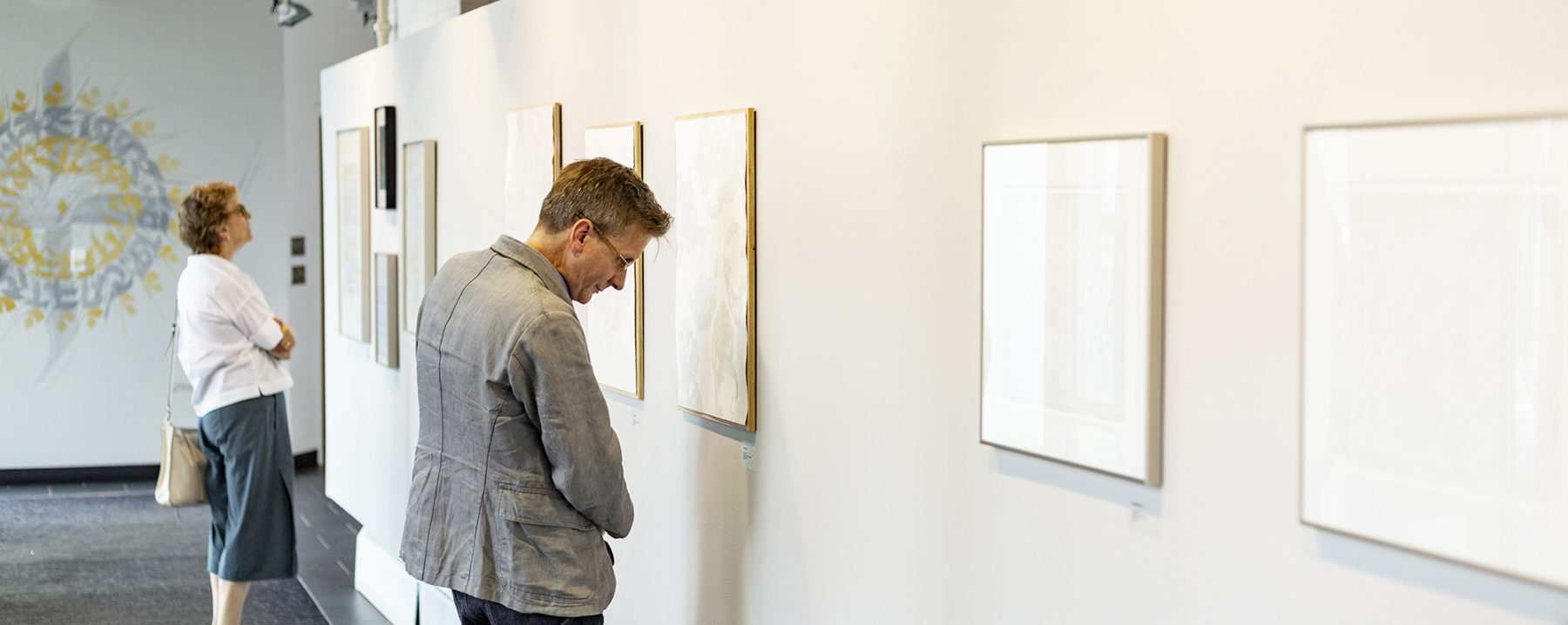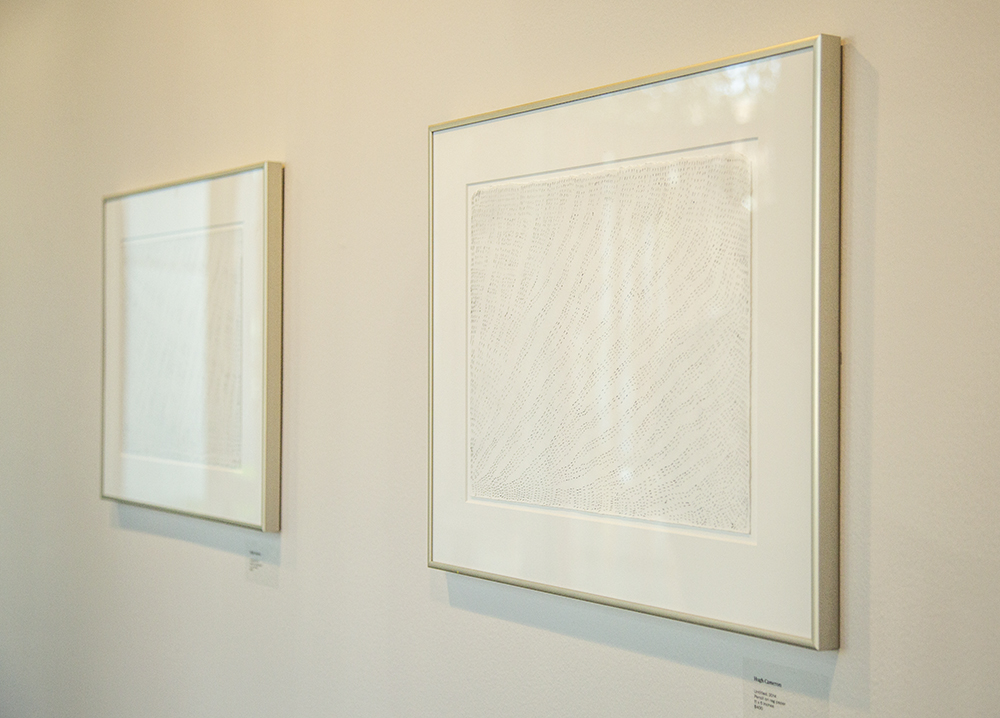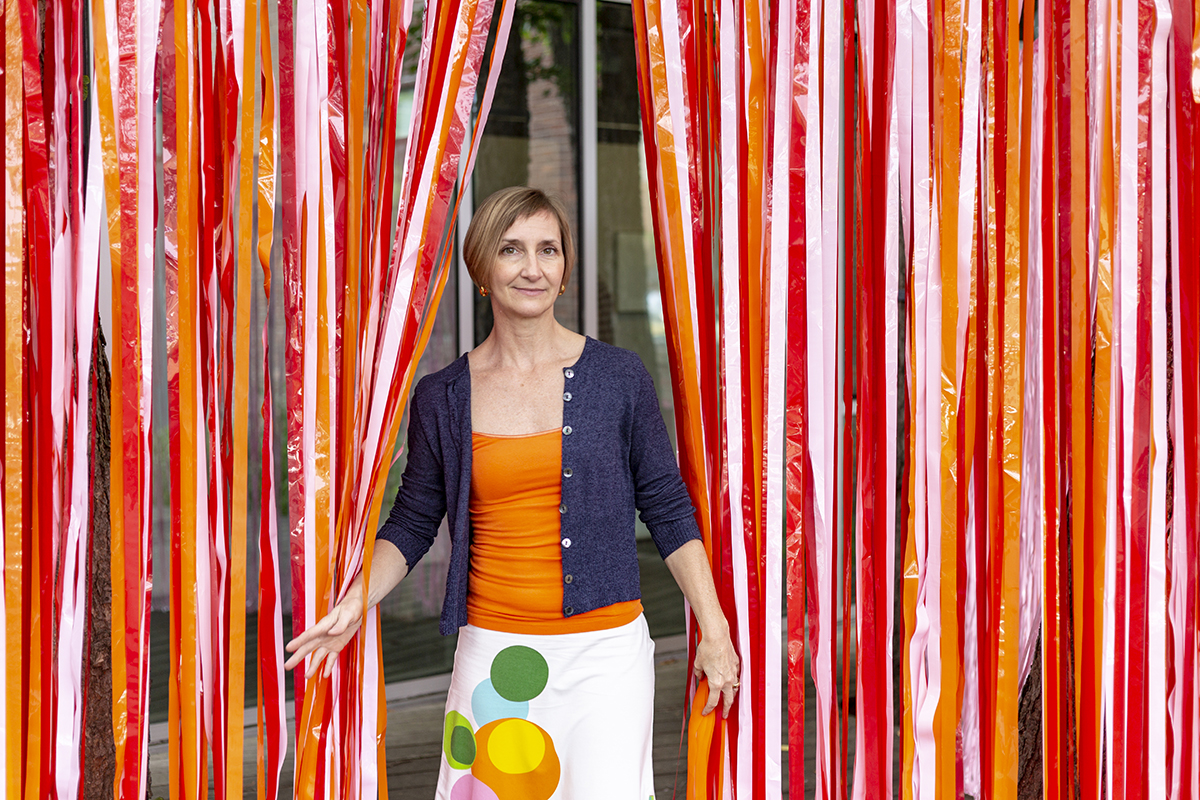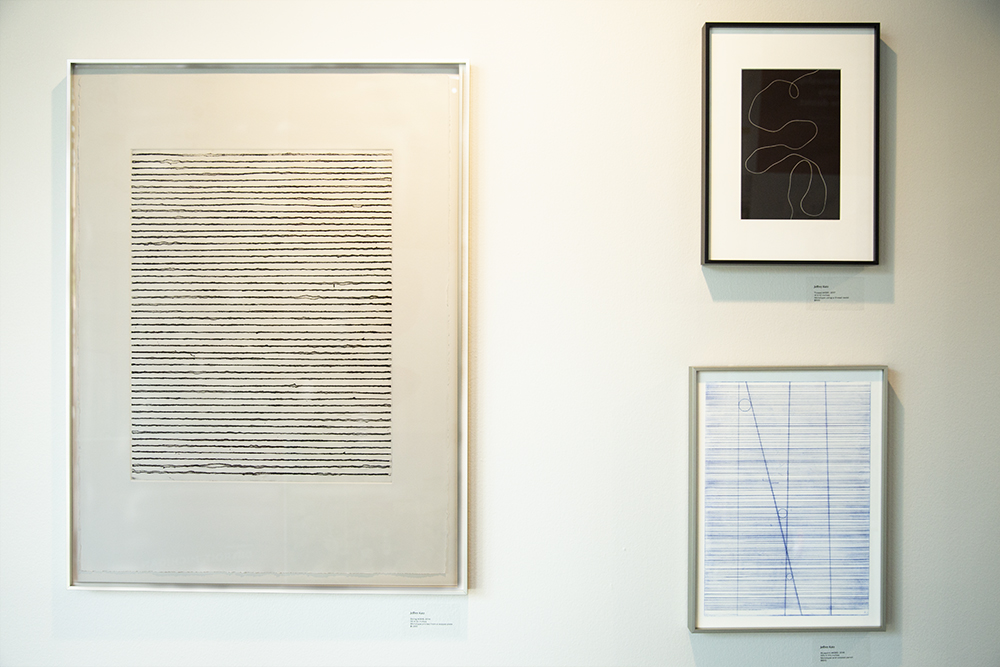Artist Q&A: the line begins to blur

 Sasaki
Sasaki

On view now in Sasaki’s gallery space is the firm’s first externally-curated exhibit, “the line begins to blur.” Focusing on varying interpretions of “ordinary lines,” each artist in this exhibition uses a simple line as the starting point for their unique artistic journey. With the help of guest curator Beth Kantrowitz, of bkprojects, we asked each artist to answer the same two questions:
What power does art have that other outlets do not?
How do you define “line”?
Scroll on for photos of the artists, their work, and their inspiring answers to these two questions below.

Artwork by Gary Batty
Q: What force does art have that other outlets do not?
Art is one place for me that time can really be abstracted. When experiencing music, books, dance, etc., time can be skewed and rearranged, but it remains in a way still perceptible. I think that being confronted with the physical piece of art—keeping in mind that the action of the artist has stopped at a specific point, while the viewer continues to interact with all the things going on in the piece—has the potential to designate time in a way unique to visual art.
Q: How do you define “line”?
Union.

Artwork by Hugh Cameron
Q: What power does art have that other outlets do not?
I’ve learned a lot about the power of art. It’s just my favorite thing to do.
Q: How do you define “line”?
A circle, a triangle or a square. There are a lot of ways to make a line.

Lynne Harlow with her installation, “Burn Baby Burn”
Q: What power does art have that other outlets do not?
In general, we collectively separate art from the creative disciplines that generate something utilitarian—practices like graphic design, architecture and craft. It’s a pretty weird distinction that we seem to implicitly agree on. Because of this, art has the unique role of presenting us with a work (painting, object, performance, installation, etc.) that has no practical use beyond our own engagement with it. Clearly, that’s not to say that art has no purpose. That’s a different conversation. But I think this idea of engagement as engagement gives art its very specific force.
Q: How do you define “line”?
I’ve thought a lot about line, trying to get at what that means in my work, since I generate lines in both two and three dimensions and in a variety of materials and media. The thing that is a constant in all of my work is the sense of edge. Really, lines emerges when the edges of things visually butt up against each other. The meeting of edges can produce all kinds of sensations—a thud, a vibration, a harmony. In the case of my installation, Burn Baby Burn, the edges of the vinyl strips visually meet the building, the trees, each other, people moving through the area—it’s a constant shifting of edges that keeps the piece active and unpredictable.
When I really want to think hard about the idea of “line,” I always go back to Cezanne. For me, his paintings are entirely about lines formed by edge, perfectly articulated through color. Even his quietest still life vibrates with the energy of those edges.

Artwork by Jeffery Katz
Q: What power does art have that other outlets do not?
Architecture and design are collaborative endeavors. Every day of my work life I deal with clients, colleagues, consultants, craftspeople, workrooms, and vendors. There are meetings and conference calls. There are proposals, contract documents, spread sheets, and Gantt charts. In professional practice, the development of ideas is often the result of and reaction to the requirements of the project. It often involves a team.
Making art, however, is solitary. Though I consult books, find images online, see shows, and talk to artists, in the end it’s just me. Art allows me the time to try ideas and techniques. The production of ideas and images in art is a reaction to my own work, to what I’ve previously done.
For me, this is the force that art has: I can concentrate on an idea intensely, with no distractions, and with no time limit. For instance, for about eight years I have been working with thread to make images. Inked thread creates a particular kind of mark. Using thread in the resist technique to create layers and patterns leaves a different mark. Thread is about structure, shape, attachment, flexibility, line, curve, craft, and decoration. These are all things that I deal with in my professional work, so art allows me to explore unencumbered any ideas that may be relevant to my professional work. Or it may simply be “art for art’s sake.”
Q: How do you define “line”?
If a line can be defined as 1) a mark, and 2) as something that is used for a specific purpose (fishing line, clothes line), then I’m conflating those things by using the latter to create the former. In my prints, lines are made with twine, thread, or by a cut. More specifically, the shadow of the twine is used to make a cut in a copper plate, which is inked to make a mark. The thread is used in one instance to make a line that is positive mark made by ink, and in another the line is made by the absence of ink.
I use lines in a lot of ways: for direction, as a boundary, as script, as a metaphor for script, to describe a territory, to represent spatial configurations, to define planes, to represent a concept or some aspect of the physical world in a sketch. But it’s probably simpler to say that, for me, the work of Fred Sandback pretty much defines “line.”

Jennifer Munson with her artwork
Q: What power does art have that other outlets do not?
We make our mark on history with art and architecture. Making art is the creative impulse to engage in the conversation about who we are, what we think, and what we desire. Art is a life force that creates something out of nothing.
Q: How do you define “line”?
A line is something that defines, separates, connects, stands alone, and creates space. For me, lines are stripes that layer, equalize, confirm, and create relationships. Stripes in textiles adhere to a grid structure that forms a larger pattern. Stripes can be strong and bold, or delicate and barely visible.